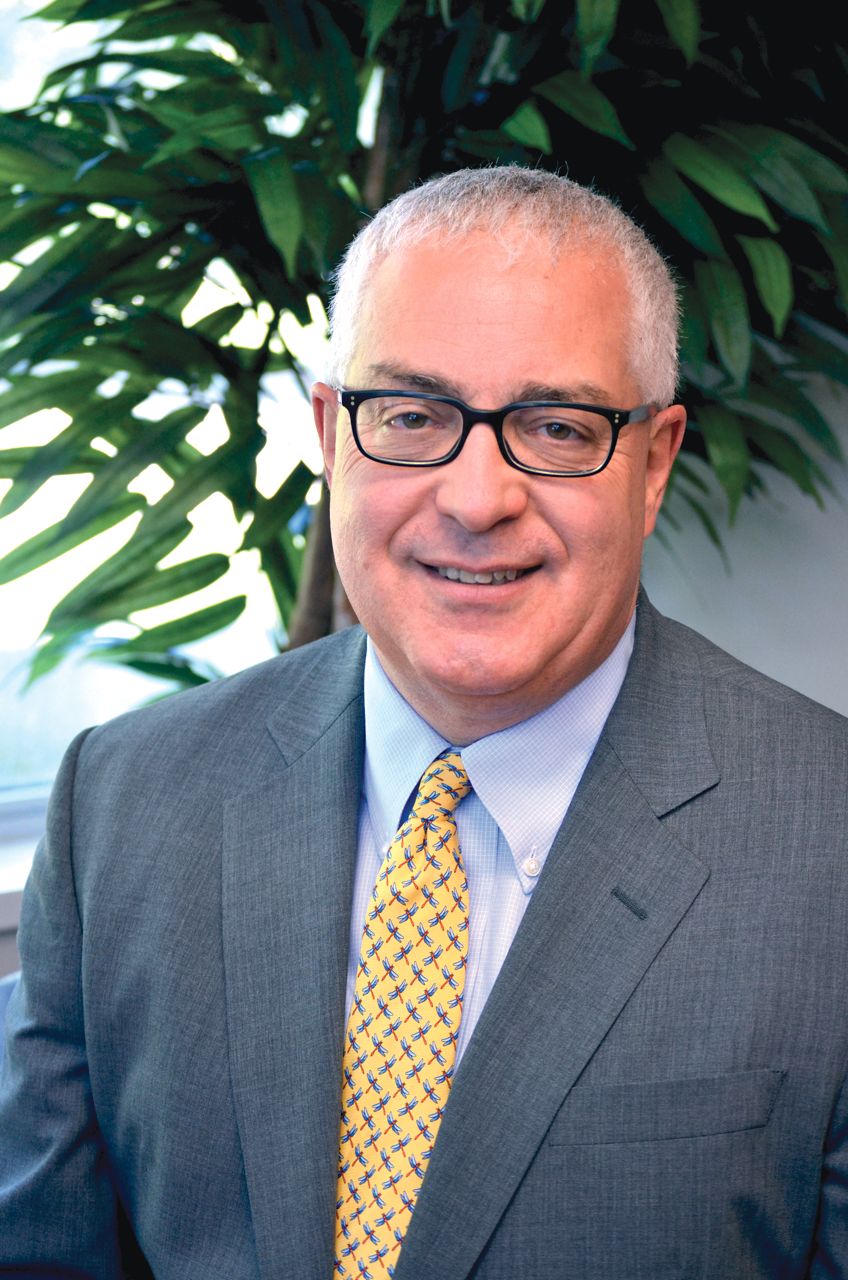User login
Contemporary management of what has been a difficult problem – deep venous obstruction – will be highlighted during “Femoro-Iliocaval Interventional Strategies to Reduce Venous Hypertension, Hot Ideas for Recanalizing Chronic Total Occlusions” on Friday morning.
“This session will focus on recent advances in thinking and technique in the intervention and treatment of symptomatic deep vein disease,” said co-moderator Dr. Paul J. Gagne, clinical associate professor at New York University School of Medicine and chief of vascular surgery Norwalk Hospital. “It will highlight what can be done to help patients who, until this past decade, had no hope of regaining their quality of life.
“The session will focus on pathology of post-thrombotic venous obstruction, as well as the important principles of reconstruction,” added co-moderator Dr. Anthony J. Comerota, adjunct professor of surgery at the University of Michigan. “Practitioners involved in the management of these patients will find that their understanding of the disease process will be expanded. They will also receive technical treatment tips to improve patient outcomes.”
Dr. Comerota will begin the session with a discussion of post-thrombotic venous obstruction tissue. Dr. Seshadri Raju of the St. Dominic Center and Rane Center in Jackson, will cover hyperdilation as a reinterventional technique. Dr. Stephen A. Black of the University of London and Guys and St. Thomas Hospital will speak on reasoning behind deep vein surgical reconstruction. There will also be a video technique demonstration by Dr. Ramesh K. Tripathi of the University of Sunshine Coast in Sippy Downs, Australia, on endovenectomy and iliac stent placement.
Stents, stent trials, and off-stent use will be a major focus during the balance of the session. “Presently, no stent is approved for use in the venous system. However, there has been a great deal of effort invested in studying stents of different design, which have varying physical characteristics,” noted Dr. Comerota. “These stents will be discussed and the latest data from clinical trials will be presented. Session presentations by experts will offer enormous advantage to attendees.”
Dr. Erin H. Murphy, director of the Venous and Lymphatic Institute of Sanger Heart and Vascular in Charlotte, will present three talks, including discussions of the diagnostic and stenting implications of vein shape and the Abre stent and trial design. Dr. Michael K.W. Lichtenberg of Klinikum Arnsberg in Germany will highlight patency rates and clinical results of the Veniti VICI and Venovo Venous stents. Dr. Lowell S. Kabnick of New York University Medical School and Medical Center will cover whether stent lumen shape matters as viewed via the VIRTUS Feasibility Trial.
“Dr. Lichtenberg’s updates on new venous stents available in Europe and in trials in the U.S. will provide the audience with important information about technologies soon to be commercialized in the U.S. and abroad,” Dr. Gagne said. “The discussion by Dr. Murphy on veins being elliptical conduits is an important concept specific to deep vein disease.”
The final section will include presentations by Dr. Raju, Jose I. Almeida, MD, of the University of Miami School of Medicine and Miami Vein Center, and Rick De Graaf, MD, from Maastricht University Medical Center. Topics will include z-stent extension into the cava, crossing femoro-iliocaval chronic total occlusions, and confluence, femoral vein, and single inflow vein stenting.
“Patients with symptomatic deep venous insufficiency now have expanding options for treatment with both increasingly improved tools and understanding of the technical factors that result in successful interventions,” explained Dr. Gagne. “The session will provide guidance from thought leaders in the proper technique and thought process for achieving successful revascularization of deep vein occlusive disease.”
“The attendees will receive the latest information on the current techniques of proximal venous recanalization,” concluded Dr. Comerota. “Not only will their understanding of the disease process be strengthened, but they will also be exposed to the nuances of diagnosis and treatment, which are crucial to successful short- and long-term patient management.”
Contemporary management of what has been a difficult problem – deep venous obstruction – will be highlighted during “Femoro-Iliocaval Interventional Strategies to Reduce Venous Hypertension, Hot Ideas for Recanalizing Chronic Total Occlusions” on Friday morning.
“This session will focus on recent advances in thinking and technique in the intervention and treatment of symptomatic deep vein disease,” said co-moderator Dr. Paul J. Gagne, clinical associate professor at New York University School of Medicine and chief of vascular surgery Norwalk Hospital. “It will highlight what can be done to help patients who, until this past decade, had no hope of regaining their quality of life.
“The session will focus on pathology of post-thrombotic venous obstruction, as well as the important principles of reconstruction,” added co-moderator Dr. Anthony J. Comerota, adjunct professor of surgery at the University of Michigan. “Practitioners involved in the management of these patients will find that their understanding of the disease process will be expanded. They will also receive technical treatment tips to improve patient outcomes.”
Dr. Comerota will begin the session with a discussion of post-thrombotic venous obstruction tissue. Dr. Seshadri Raju of the St. Dominic Center and Rane Center in Jackson, will cover hyperdilation as a reinterventional technique. Dr. Stephen A. Black of the University of London and Guys and St. Thomas Hospital will speak on reasoning behind deep vein surgical reconstruction. There will also be a video technique demonstration by Dr. Ramesh K. Tripathi of the University of Sunshine Coast in Sippy Downs, Australia, on endovenectomy and iliac stent placement.
Stents, stent trials, and off-stent use will be a major focus during the balance of the session. “Presently, no stent is approved for use in the venous system. However, there has been a great deal of effort invested in studying stents of different design, which have varying physical characteristics,” noted Dr. Comerota. “These stents will be discussed and the latest data from clinical trials will be presented. Session presentations by experts will offer enormous advantage to attendees.”
Dr. Erin H. Murphy, director of the Venous and Lymphatic Institute of Sanger Heart and Vascular in Charlotte, will present three talks, including discussions of the diagnostic and stenting implications of vein shape and the Abre stent and trial design. Dr. Michael K.W. Lichtenberg of Klinikum Arnsberg in Germany will highlight patency rates and clinical results of the Veniti VICI and Venovo Venous stents. Dr. Lowell S. Kabnick of New York University Medical School and Medical Center will cover whether stent lumen shape matters as viewed via the VIRTUS Feasibility Trial.
“Dr. Lichtenberg’s updates on new venous stents available in Europe and in trials in the U.S. will provide the audience with important information about technologies soon to be commercialized in the U.S. and abroad,” Dr. Gagne said. “The discussion by Dr. Murphy on veins being elliptical conduits is an important concept specific to deep vein disease.”
The final section will include presentations by Dr. Raju, Jose I. Almeida, MD, of the University of Miami School of Medicine and Miami Vein Center, and Rick De Graaf, MD, from Maastricht University Medical Center. Topics will include z-stent extension into the cava, crossing femoro-iliocaval chronic total occlusions, and confluence, femoral vein, and single inflow vein stenting.
“Patients with symptomatic deep venous insufficiency now have expanding options for treatment with both increasingly improved tools and understanding of the technical factors that result in successful interventions,” explained Dr. Gagne. “The session will provide guidance from thought leaders in the proper technique and thought process for achieving successful revascularization of deep vein occlusive disease.”
“The attendees will receive the latest information on the current techniques of proximal venous recanalization,” concluded Dr. Comerota. “Not only will their understanding of the disease process be strengthened, but they will also be exposed to the nuances of diagnosis and treatment, which are crucial to successful short- and long-term patient management.”
Contemporary management of what has been a difficult problem – deep venous obstruction – will be highlighted during “Femoro-Iliocaval Interventional Strategies to Reduce Venous Hypertension, Hot Ideas for Recanalizing Chronic Total Occlusions” on Friday morning.
“This session will focus on recent advances in thinking and technique in the intervention and treatment of symptomatic deep vein disease,” said co-moderator Dr. Paul J. Gagne, clinical associate professor at New York University School of Medicine and chief of vascular surgery Norwalk Hospital. “It will highlight what can be done to help patients who, until this past decade, had no hope of regaining their quality of life.
“The session will focus on pathology of post-thrombotic venous obstruction, as well as the important principles of reconstruction,” added co-moderator Dr. Anthony J. Comerota, adjunct professor of surgery at the University of Michigan. “Practitioners involved in the management of these patients will find that their understanding of the disease process will be expanded. They will also receive technical treatment tips to improve patient outcomes.”
Dr. Comerota will begin the session with a discussion of post-thrombotic venous obstruction tissue. Dr. Seshadri Raju of the St. Dominic Center and Rane Center in Jackson, will cover hyperdilation as a reinterventional technique. Dr. Stephen A. Black of the University of London and Guys and St. Thomas Hospital will speak on reasoning behind deep vein surgical reconstruction. There will also be a video technique demonstration by Dr. Ramesh K. Tripathi of the University of Sunshine Coast in Sippy Downs, Australia, on endovenectomy and iliac stent placement.
Stents, stent trials, and off-stent use will be a major focus during the balance of the session. “Presently, no stent is approved for use in the venous system. However, there has been a great deal of effort invested in studying stents of different design, which have varying physical characteristics,” noted Dr. Comerota. “These stents will be discussed and the latest data from clinical trials will be presented. Session presentations by experts will offer enormous advantage to attendees.”
Dr. Erin H. Murphy, director of the Venous and Lymphatic Institute of Sanger Heart and Vascular in Charlotte, will present three talks, including discussions of the diagnostic and stenting implications of vein shape and the Abre stent and trial design. Dr. Michael K.W. Lichtenberg of Klinikum Arnsberg in Germany will highlight patency rates and clinical results of the Veniti VICI and Venovo Venous stents. Dr. Lowell S. Kabnick of New York University Medical School and Medical Center will cover whether stent lumen shape matters as viewed via the VIRTUS Feasibility Trial.
“Dr. Lichtenberg’s updates on new venous stents available in Europe and in trials in the U.S. will provide the audience with important information about technologies soon to be commercialized in the U.S. and abroad,” Dr. Gagne said. “The discussion by Dr. Murphy on veins being elliptical conduits is an important concept specific to deep vein disease.”
The final section will include presentations by Dr. Raju, Jose I. Almeida, MD, of the University of Miami School of Medicine and Miami Vein Center, and Rick De Graaf, MD, from Maastricht University Medical Center. Topics will include z-stent extension into the cava, crossing femoro-iliocaval chronic total occlusions, and confluence, femoral vein, and single inflow vein stenting.
“Patients with symptomatic deep venous insufficiency now have expanding options for treatment with both increasingly improved tools and understanding of the technical factors that result in successful interventions,” explained Dr. Gagne. “The session will provide guidance from thought leaders in the proper technique and thought process for achieving successful revascularization of deep vein occlusive disease.”
“The attendees will receive the latest information on the current techniques of proximal venous recanalization,” concluded Dr. Comerota. “Not only will their understanding of the disease process be strengthened, but they will also be exposed to the nuances of diagnosis and treatment, which are crucial to successful short- and long-term patient management.”


